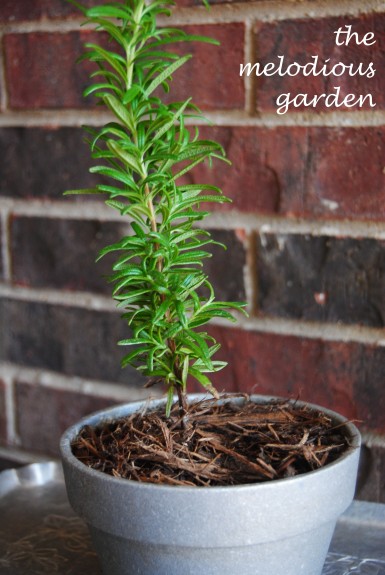I am always looking for new ways to use fresh herbs in my baking, but often think I have tried every flavor combination possible. And then along came…
Rosemary lemon bars.
I was intrigued. And rightly so. The rosemary gave an earthy depth to the citrus punch of lemon bars. I won’t bore you with a recipe, aside from this: Add one to two tablespoons of fresh minced rosemary to the dough portion of your favorite lemon bar recipe. Be sure to incorporate well so the oils from the rosemary infuse the dough.

A few culinary tips for the day…
Adding fresh lemon zest is one of the quickest ways to up the citrus flavor in any recipe. Be sure to zest just the yellow portion of the lemon. Do not zest the bitter white portion.

What is the easiest way to mince fresh rosemary?

Take the rosemary section and lay it down on a cutting board. Hold in place.

Run your knife down the leaves, just offset from the branch.

Once the leaves are off the branch, you can mince as fine as you like.
All rosemary varieties are edible, though they do vary in flavor and in growth habits.
Some rosemary plants grow as stiff upright shrubs. (See photo below.) Their branches can be cut and used as kebob skewers to impart more rosemary flavor into meat or mushrooms.

Trailing rosemary (shown below) is lovely growing over the edge of a raised bed, retaining wall or container.

Rosemary is winter hardy in North Texas. If you are “blessed” with heavy clay soil, as many of us are, it is best to amend your soil with compost and earthworm castings, as rosemary likes well drained soil. Rosemary can be planted year-round in zone 8a, though garden centers will have the best selection in spring and fall.



Now I’m intrigued. I love rosemary. I love lemon. :). I wonder if it will work in scones??
LikeLike
I think they would be great together in a scone.
LikeLike